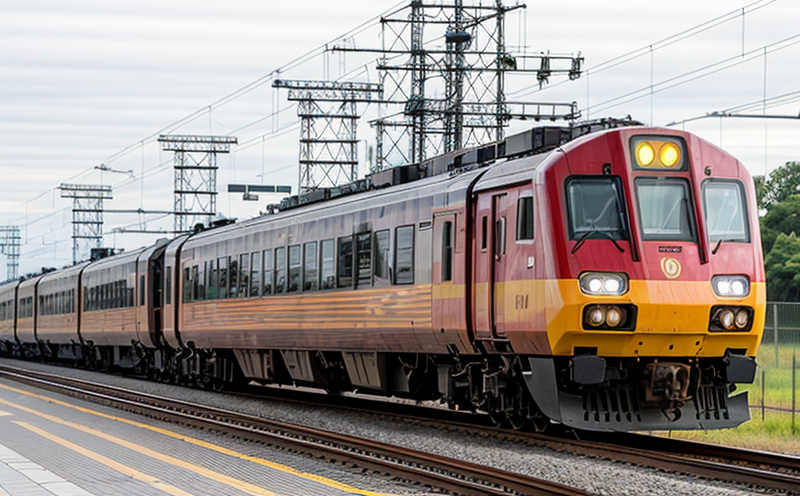EN 50238 Compatibility Testing of Communication with Rolling Stock
The European standard EN 50238 specifies requirements for the compatibility and interoperability of communication systems used in railway applications. This test ensures that communication devices, such as data loggers, radio modules, and other system components, operate reliably and without interference when integrated into rolling stock like locomotives, passenger cars, or freight wagons.
The standard aims to harmonize the communication protocols across various rail operators and vendors, thereby enhancing safety and operational efficiency in railway systems. The testing procedure ensures that all communication interfaces are compatible with the onboard network topology, power supply limitations, and environmental conditions encountered during operation.
Rolling stock typically operates under challenging environments such as electromagnetic interference (EMI), variable temperatures, and varying humidity levels. Ensuring compatibility with these stringent requirements is crucial for maintaining robust connectivity and seamless data exchange between different components of the railway system.
The test procedure involves a series of steps designed to replicate real-world scenarios experienced by rolling stock in operation. This includes power cycling tests to assess stability under fluctuating power conditions, environmental stress tests to evaluate durability against temperature variations, and interference tests to ensure resilience against electromagnetic disturbances.
By adhering to EN 50238, manufacturers can guarantee that their communication devices meet the stringent requirements set by railway authorities. This not only facilitates smoother integration into existing systems but also enhances overall reliability and safety in rail operations.
Applied Standards
| Standard | Description |
|---|---|
| EN 50238 | European standard for communication systems compatibility in railway applications. |
| ISO/IEC 17025 | Absence of bias and consistent reproducibility are ensured through accreditation to this international standard. |
| Test Procedure | Description |
|---|---|
| Power Cycling | Evaluates the ability of communication devices to withstand frequent power on/off cycles without failure. |
| Environmental Stress Tests | Assesses durability against temperature and humidity variations commonly encountered in railway environments. |
| Interference Testing | Determines resilience to electromagnetic interference from other onboard systems or external sources. |
Why Choose This Test
- Ensures compatibility with existing railway communication networks and protocols.
- Promotes interoperability between different vendors' products, enhancing system reliability.
- Avoids costly rework or replacement of non-compliant components during integration.
- Facilitates smoother deployment in diverse operational environments, including urban and rural areas.
Competitive Advantage and Market Impact
Adherence to EN 50238 can provide significant competitive advantages by ensuring that your communication products are fully compatible with railway systems. This compatibility is critical for market access, as many rail operators require compliance with this standard before approving new equipment.
By demonstrating compliance through rigorous testing, you not only meet regulatory requirements but also enhance your brand’s reputation in the industry. Customers trust suppliers who can demonstrate robust quality and reliability, which can translate into increased market share and customer loyalty.
The test results also provide valuable insights for ongoing product development, helping to identify areas for improvement and innovation. This proactive approach ensures that your products remain at the forefront of technological advancements and safety standards in railway communication systems.





